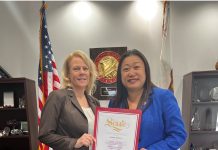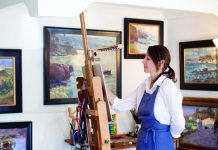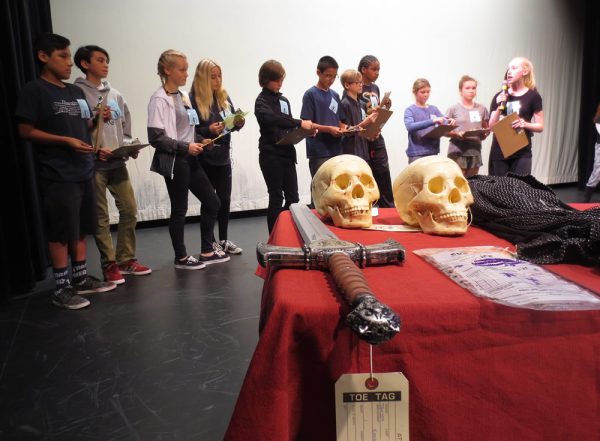
It took Thurston Middle School students just an hour to unanimously convict Henry Tudor of murdering King Richard III in a mock trial last Friday, May 27.
The amount of forensic evidence was enough for Mia Vidas, 13, to find Tudor guilty. “It was the DNA and matching imprint of the axe on his skull,” that convinced the seventh grader, one of about 200 students invited to watch the play. “I felt like I was right there with the costumes,” Mia added.
The mock King Richard III trial was never an actual event in history. It started at the beginning of the school year with 50 students, who enrolled in an after-school Forensic/Mock Trial Club led by history teacher Michelle Martinez, 50, and language arts teacher Leah Prettyman. Students joined the club to participate in crime scene investigation techniques. It culminates in a theatrical staging to encourage students through role-playing to determine how King Richard III was murdered during the Battle of Bosworth in 1485. The suspected slayer was portrayed by student Jared Moy.
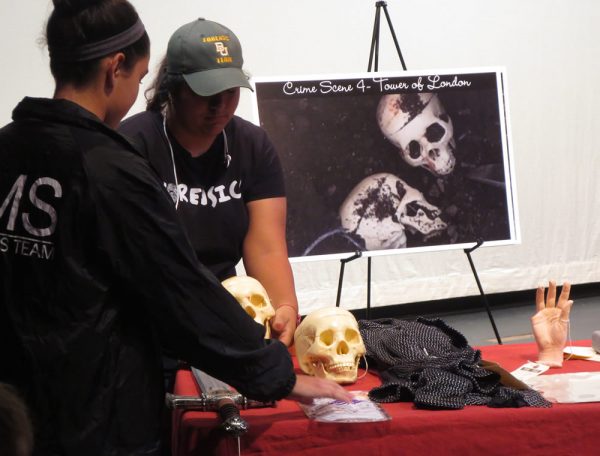
While teaching the course, Martinez said, “I tried to tone it down and not make it too gruesome.” She said she asked parents to sign waivers.
Martinez enlisted a partner on the project, forensic anthropologist Dr. Lori Baker, of Baylor University in Waco, Tex. Using a livestream feed and a robot in her campus forensic lab, Baker demonstrated for students the proper method for crime scene investigations, body identification, bone extraction and burial procedures.
Martinez’ daughter, 22, a Baylor student studying forensic anthropology, also helped. “In the club, I incorporate projects and activities that require different skill sets or interests so that I can ignite a passion for their future careers,” said Martinez, whose daughter this week traveled to Italy for a six-week forensic excavation and is blogging about the experience.
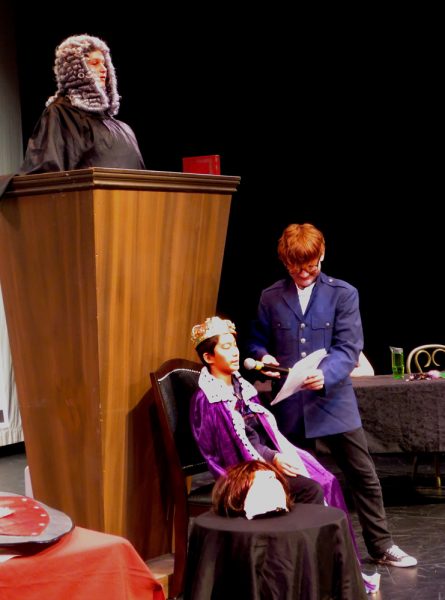
Cox Communications provided a $5,000 grant to underwrite the project, which allowed Martinez to buy a 3D printer, bones and period costumes. She also invited artist and sculptor Joshua Gagliardi to lead a full-face and hand-casting demonstration to guide students through a facial reconstruction project, which aids in the identification of skeletal remains.
The cast of student Malin Glade’s hand and the full-face cast of Max O’Connor were introduced as evidence in the mock trial. The prosecutor used the casts to establish the identity of the victim in the faux courtroom on the Black Box theater stage.
Seventh grade students were randomly chosen to serve as jurors in order to understand their civic responsibilities as well. Student jurors were required to try out for the role and answer a questionnaire to mirror the actual judicial process.
The after-school club has become so popular that forensic anthropology has been added as a regular elective in fall and five of the students that took the class are making it their career focus, said Martinez.


